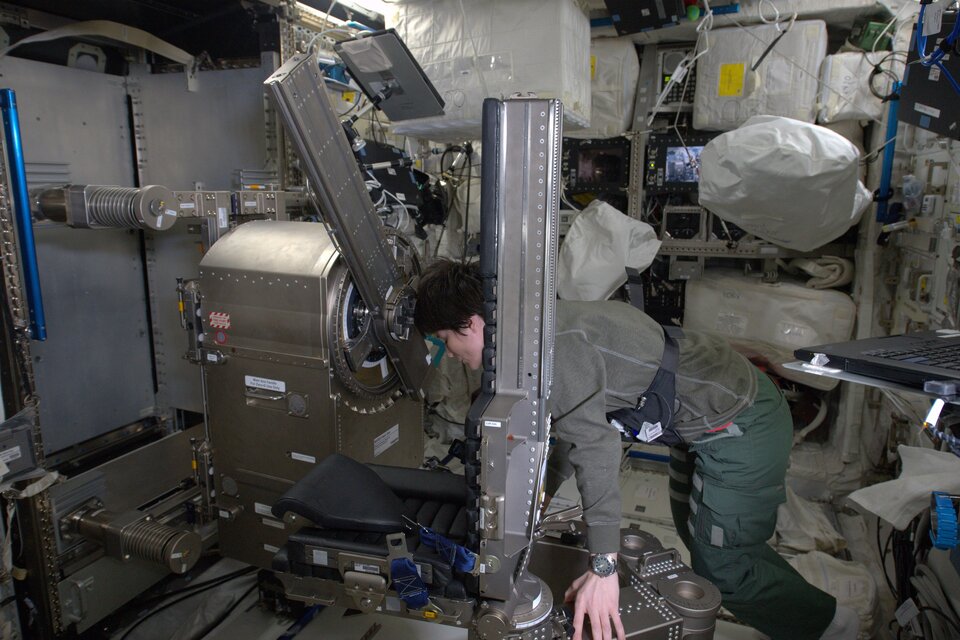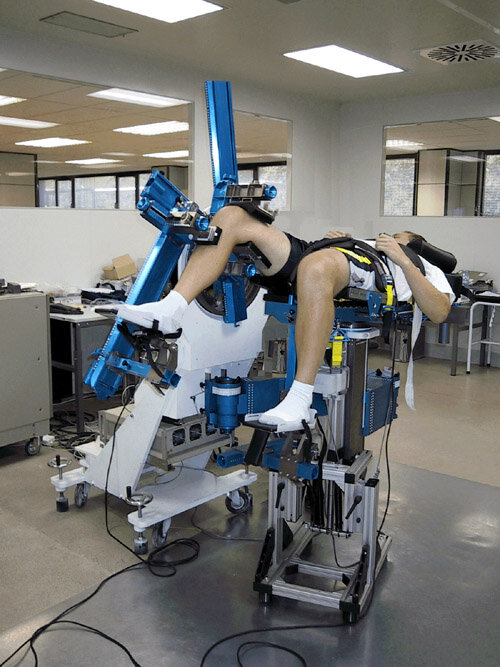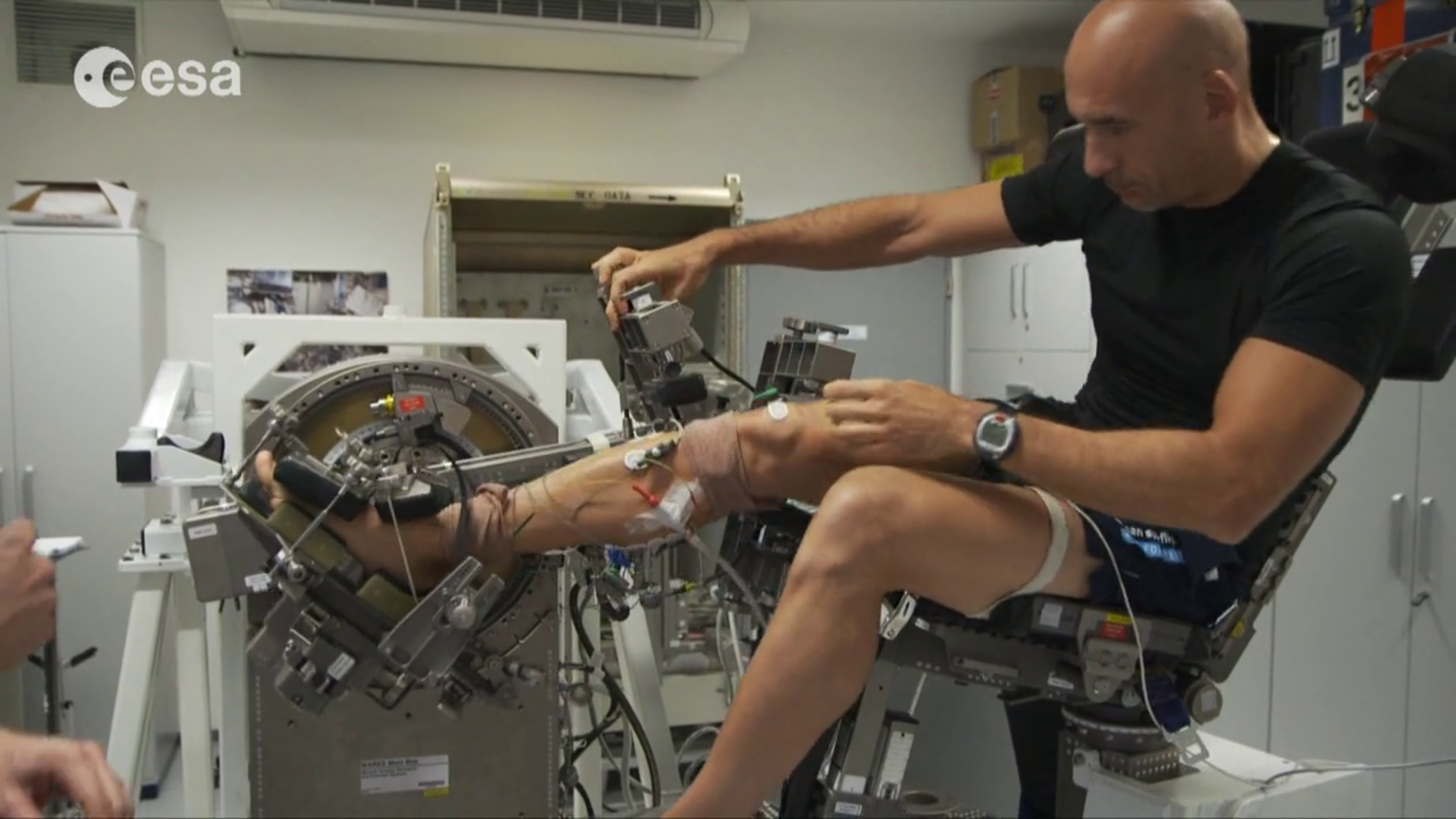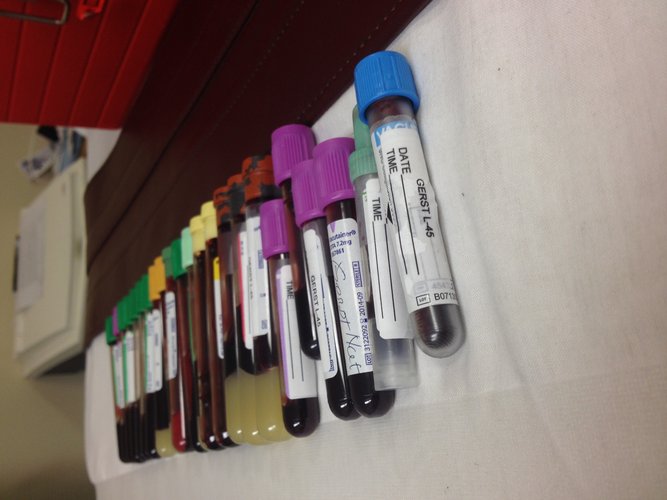Muscle Atrophy Research and Exercise System
The Muscle Atrophy Research and Exercise System, or MARES for short, is a three-in-one muscle-measurement machine on the International Space Station that monitors astronauts’ muscles as they work out.

Muscle strength decreases during spaceflight and researchers need to know why this happens in order to prepare for long-duration missions and safe space tourism. MARES is an exercise bench that offers detailed information about how muscles behave during spaceflight.
Looking at muscle contraction at a single moment gives little information but MARES provides a full overview of muscle speed and force as an elbow or knee joint bends.
Fine motor control

Our bodies are amazing machines that perform wonderful feats daily without us even noticing. Hold a glass in your hand and fill it with water and your arm muscles will automatically hold the glass steady and stable despite the changing weight as it fills.
MARES can chart this fine motor control as well as giving a precise overview of muscle torque and speed. Astronauts move their joints to try to follow a graph or dot on MARES’ screen as a motor generates counterforce.
“There is no equipment on Earth other than MARES that can offer this type of fine control and measure the user’s reaction,” notes ESA project manager Joaquim Castellsaguer i Petit.
The machine is too complex for everyday exercise, but is perfect for testing and analysing exercise routines to counteract the loss of muscle mass seen in astronauts. The next generation of space exercise machines will probably include variable counterforce, and MARES can be used for preliminary testing.
Special motors were developed for MARES – two high-power and a third for low power. “When we started designing the machine no motor in the world could power MARES,” explains Joaquim.
The equipment is controlled and run from the CADMOS User Support and Operations Centre in Toulouse, France.
MARES is stored and used in Europe’s Columbus laboratory module. There is a ground model in Toulouse for reference plus one at the European Astronaut Centre in Cologne, Germany for training.
Technical specifications
Torque and angular position/velocity measurements and training on joint movements, both left and right:
- Knee flexion/extension
- Ankle flexion/extension
- Trunk flexion/extension
- Hip flexion/extension
- Shoulder flexion/extension
- Elbow flexion/extension
- Wrist flexion/extension; supination/pronation; radial/ulnar deviation
Force and linear position and velocity measurements and training are supported on the following multi-joint movements:
- Whole arm linear press (front, overhead and intermediate trajectories)
- Whole leg linear press (front, down and intermediate trajectories)
MARES supports exercise motions in these modes:
- Isometric
- Isokinetic (concentric and eccentric)
- Isotonic (concentric and eccentric)
- Simulation of ideal elements: spring, friction and inertia
- Parameter control following a predefined pattern: position control, velocity control, torque/force control, power control
- Quick release of free motion
Complex combinations of these modes are possible.
Maximum ratings
Torque (Nm): ±450 continuous, ±900 peak (200 ms)
Force (N): ± 250
Angular velocity (rad/s): ±9 (515°/s) concentric and eccentric
Linear velocity (m/s): ± 0.5
Mechanical power (W): 2700 continuous, 4500 peak
Accuracy
Torque: ±0.3 Nm for low torques, ±0.5% for high torques; 500 Hz
Force: ±0.125 N; 500 Hz
Angular velocity: ±0.2°/s for low velocities, ±0.5% for high velocities; 200 Hz
Linear velocity: ±1 mm/s for low velocities, ±0.1% for high velocities; 200 Hz
Angular position: ±0.5°; 200 Hz
Linear position: ±0.5 mm; 200 Hz
Size and power consumption
Mass: 200 kg
Main box size: 95 x 45 x 45 cm
Power: 300 W average, 1000 W peak


Access the video














 Germany
Germany
 Austria
Austria
 Belgium
Belgium
 Denmark
Denmark
 Spain
Spain
 Estonia
Estonia
 Finland
Finland
 France
France
 Greece
Greece
 Hungary
Hungary
 Ireland
Ireland
 Italy
Italy
 Luxembourg
Luxembourg
 Norway
Norway
 The Netherlands
The Netherlands
 Poland
Poland
 Portugal
Portugal
 Czechia
Czechia
 Romania
Romania
 United Kingdom
United Kingdom
 Slovenia
Slovenia
 Sweden
Sweden
 Switzerland
Switzerland





























